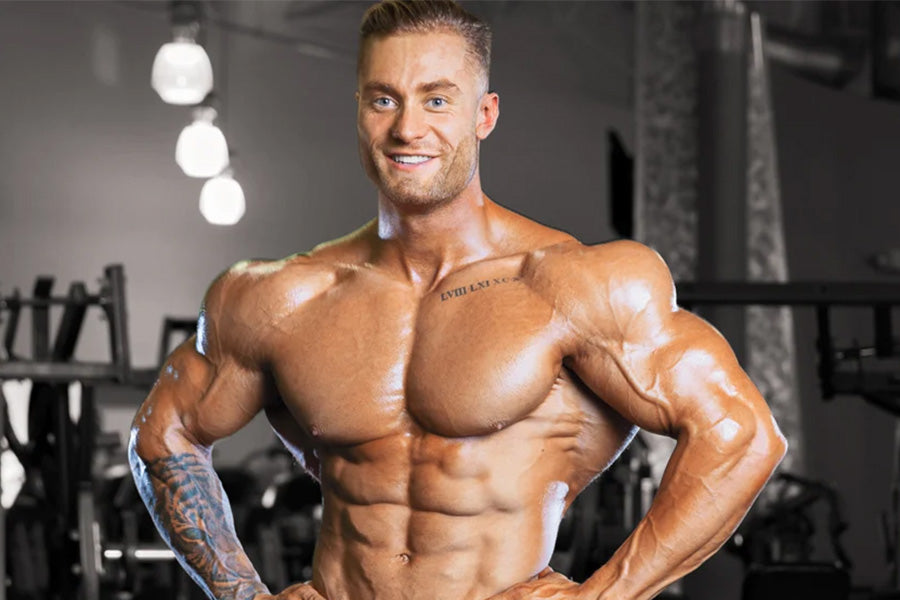Training shoulders is an easy task because tons of exercises target the shoulders. The shoulder joint is a ball and socket joint, which is quite unstable, at least when compared to the hip. The shoulder consists of multiple planes of movement, such as flexion (raising your arm up), extension (bring your arm behind you), external rotation (imagine the action of throwing a ball), and internal rotation (imagine the action of knocking on a door).
Multiply the number of exercises by the many types of lifting equipment available today, such as barbells, dumbbells, cables, and so on. The variety of options available will amaze you. Still, some people have unbalanced delts. These distorted muscles could be because the front delts dominate the rear delts due to poor posture or only certain planes of motion are worked while others are neglected.
Workout Summary
|
Main Goal |
Build Muscle |
|
Workout Type |
Single Muscle Group |
|
Training Level |
Advanced |
|
Program Duration |
Four Weeks |
|
Days Per Week |
1 |
|
Time Per Workout |
50-70 Minutes |
|
Equipment Required |
|
|
Target Gender |
Male & Female |
|
Recommended Supplements |
In this workout, we have top tips and tricks for targeting the three heads of your deltoids. These exercises will help you maximize your shoulder development to increase strength and size.
Related Article: 10 Things I Wish I Knew Before I Started Lifting
Workout Description
When your goal is to build muscles, you should burn them out.
However, the human body wasn't designed to store a lot of muscle mass. The body prefers additional fat, part of our biological survival mechanism.
As a result, building muscle mass is not only low on the basic list of "physiological necessities" for the human body, but it is also something the body strives to prevent. This is why you must overcome your biology and force hypertrophy to occur.
And how do you accomplish this? All it takes is a gym or different sets of dumbbells and some extra protein. DMoose Whey Protein has a lot of essential amino acids, which are the building blocks for new muscle in the body.
Related Article: Fixed Vs Adjustable Dumbbells: Which One is Better for You?
Muscle Stimulation by Resistance Training
Resistance training stimulates muscle growth with barbells, dumbbells, cables, and machines. While gains by weightlifting are often quite rapid initially, resistance training can cause bodybuilders to lose muscles over time if they follow a similar workout routine.
Most trainees follow a steady pattern in their workouts. They use the same sets, reps, and lifting speeds week after week. As mentioned, the human body is very resistant to building muscle. If you continue to speak the same language to them, they will "stop listening."
You must make a difference if you want to see change. It is important to mention that intensity does not always correlate with the bar’s weight. You can create intensity by stressing your muscles in a way they aren't used to or comfortable with. The muscles don't "know" how much weight they are carrying, but they fully understand and respond to tension.
Keeping this in mind, we present you with a 4-week, shoulder-transforming workout program consisting of some of the most intense training techniques.
Every week, you will be challenging your delts with a new workout routine that will shock your muscles into massive growth.
Related Article: How to Get Stronger and More Defined Shoulders
What is Tempo Training and How to Apply it?
Tempo training is a set of four numbers. The numbers are based on time in seconds. Tempo numbers refer to the speed at which you perform each repetition of a specific exercise. The goal of tempo training is to improve your muscular endurance, strength, and range of motion.
If you've ever looked at a workout and seen tempo numbers listed next to the exercises below, you might be wondering what they mean.
Let's take a Bicep Curl for a 3/1/2/1 tempo for example:
3- The first number is the eccentric phase or the downward motion of the exercise.1- The second number is the pause you will take after the eccentric phase. 2- The third number is the concentric phase or the upward motion.1- The fourth number is the pause you will take after the concentric phase.
Therefore, you would start at the top of a bicep curl, descend for 3 seconds, pause for 1 second at the bottom, ascend for 2 seconds, and lastly pause for 1 second back at the top.
Tempo training can be a great way to improve your results in the gym. By controlling the speed of your repetitions, you can target different muscle fibers and train them more effectively.
For example, slower eccentric tempos are great for building strength, while faster tempos can help you develop explosive power. By using tempo training in your workouts, you can take your results to the next level.
By manipulating the tempo, or speed of your movements, you can target specific muscle groups and energy systems to get the most out of your workout. This type of training can be beneficial for both beginners and experienced exercisers alike.
There are many benefits to tempo training, including improved cardiovascular fitness, increased muscular endurance, and improved joint stability. Tempo training can also help to improve your running economy, which is the amount of energy you expend per unit of distance.
Once you have completed your tempo training workout, it is important to cool down properly. This will help your body to recover from the strenuous workout and prevent any injuries from occurring.
Weekly Workout Program
Here are the different 4-week workouts to shock your shoulders and promote muscle mass.
Week 1: The Fast Twitch Muscle Fiber Burn
These exercises are designed to increase fast-twitch muscle fiber firing by using high repetitions (to exhaust slow-twitch fibers and heavy explosive lifts, which excite the central nervous systems).
|
Exercise |
Tempo |
Sets |
Reps |
|
2/1/2/1 |
3 |
21-25 |
|
|
5/1/1/1 |
3 |
4-6 |
|
|
2/1/2/1 |
3 |
10-12 |
|
|
2/1/2/1 |
3 |
10-12 |
Week 2: Distinct Tempo Range
This training practice uses four different rep tempos for each movement, emphasizing a different range section. This allows one to knock into multiple growth avenues by forcing the muscle to endure a different form of tension for each exercise.
|
Exercise |
Tempo |
Sets |
Reps |
|
4/1/2/1 |
3 |
8-10 |
|
|
2/1/2/1 |
3 |
8-10 |
|
|
6/1/2/1 |
3 |
6-8 |
|
|
2/1/2/4 |
3 |
6-8 |
Week 3: Shock Intensity Strategies
This training practice employs several "intensity strategies" that shock the shoulder muscles and inflame the CNS. These two actions combine to promote muscle growth.
|
Exercise |
Tempo |
Sets |
Reps |
|
4/1/2/1 |
3 |
4-6 |
|
|
2/1/2/1 |
3 |
13-15, 10-12, 7-9 |
|
|
2/1/2/1 |
3 |
10-12 |
|
|
2/1/2/1 |
3 |
7-9 |
Week 4: Fiber Overload
The training procedure is designed to induce maximum fiber distortion in the first half to produce an anabolic effect. In the second half of the workout, the focus shifts to flushing target muscles with blood and all the hormones, nutrients, and oxygen that it brings.
|
Exercise |
Tempo |
Sets |
Reps |
|
3/0/1/0 |
3 |
3-4 |
|
|
6/0/1/0 |
2 |
5-7 |
|
|
4/1/2/1 |
3 |
8-10 |
|
|
1/0/1/0 |
2 |
26-30 |
|
|
1/0/1/0 |
2 |
26-30 |
You can easily follow this workout in your commercial gym, but some modifications should be made for your in-home gym if you don't have machines or cables.
To progress with your weights, you can buy a set of adjustable dumbbells. You can simply switch up the plates and challenge your body with the versatile adjustable dumbbells by DMoose.
For cable modifications, you can use Pull Up Resistance and Workout Bands or Resistance Tube Set. These are the best investment for your home gym for targeting different muscle groups and full-body workouts.
Wrapping Up
There is no rocket science to stimulating muscle growth in the shoulders. All you need is to progress through the sets, reps, and lifting speeds week after week. Don't get comfortable with a single routine. Push yourself harder to enhance muscle development and see amazing results.











